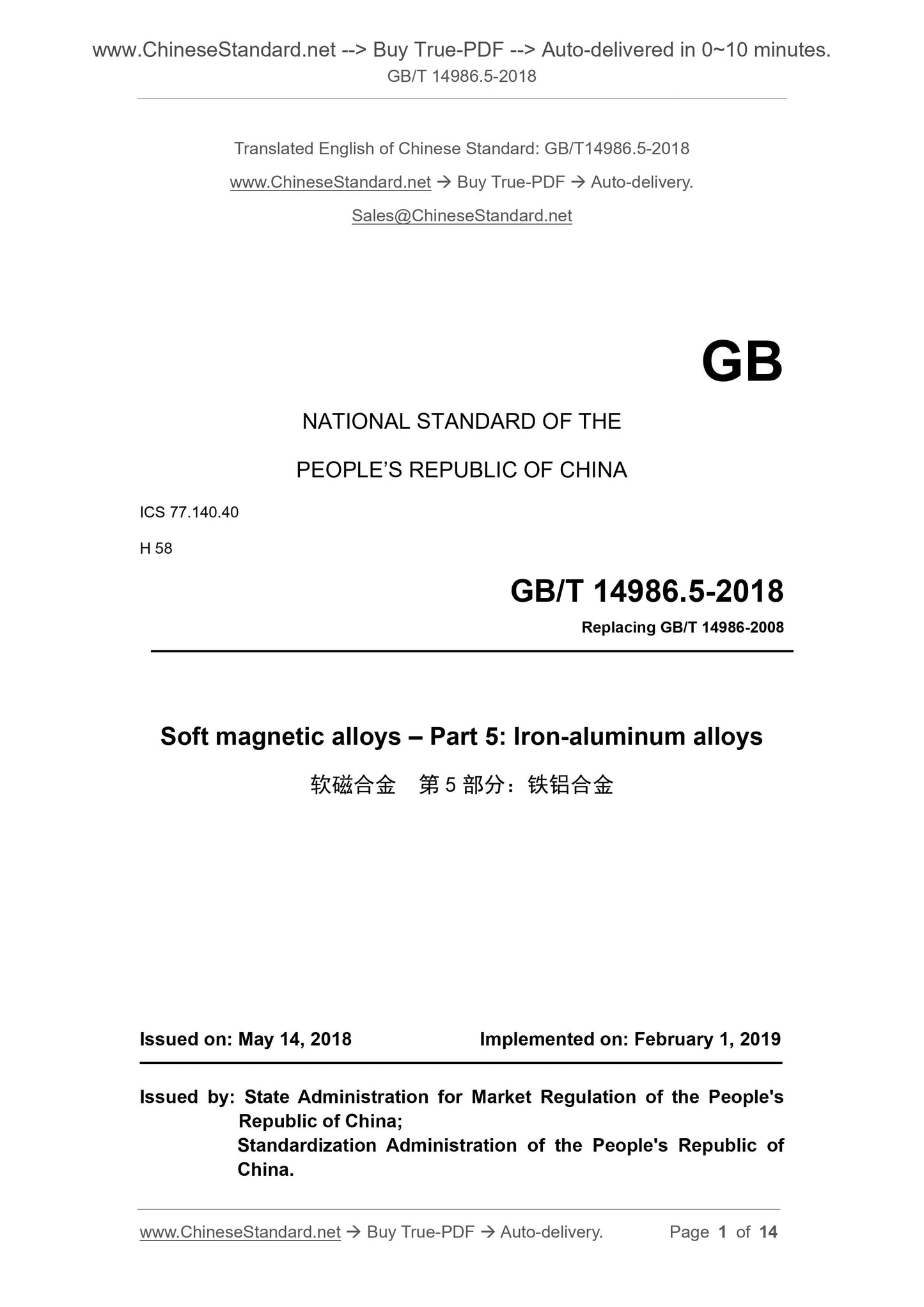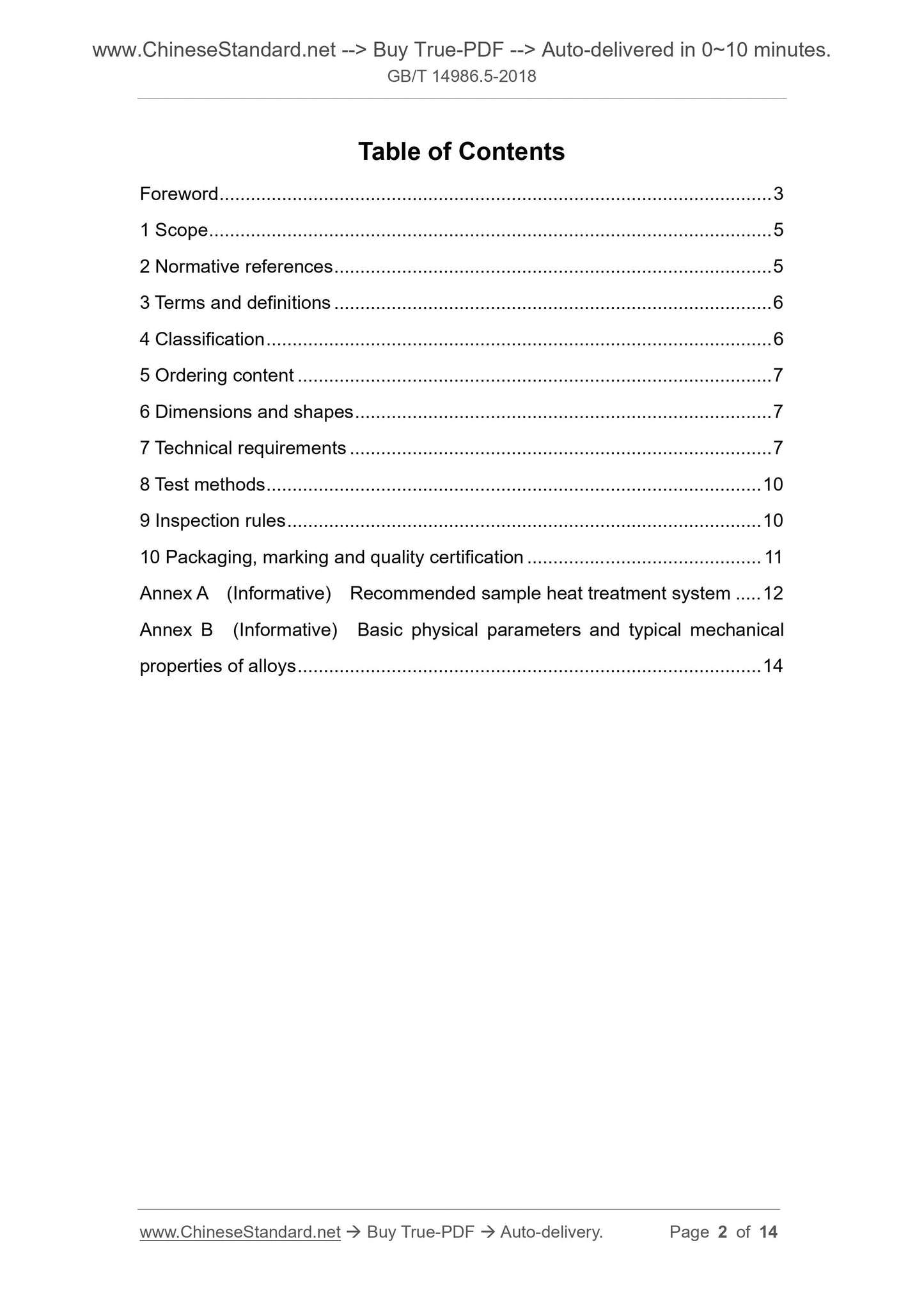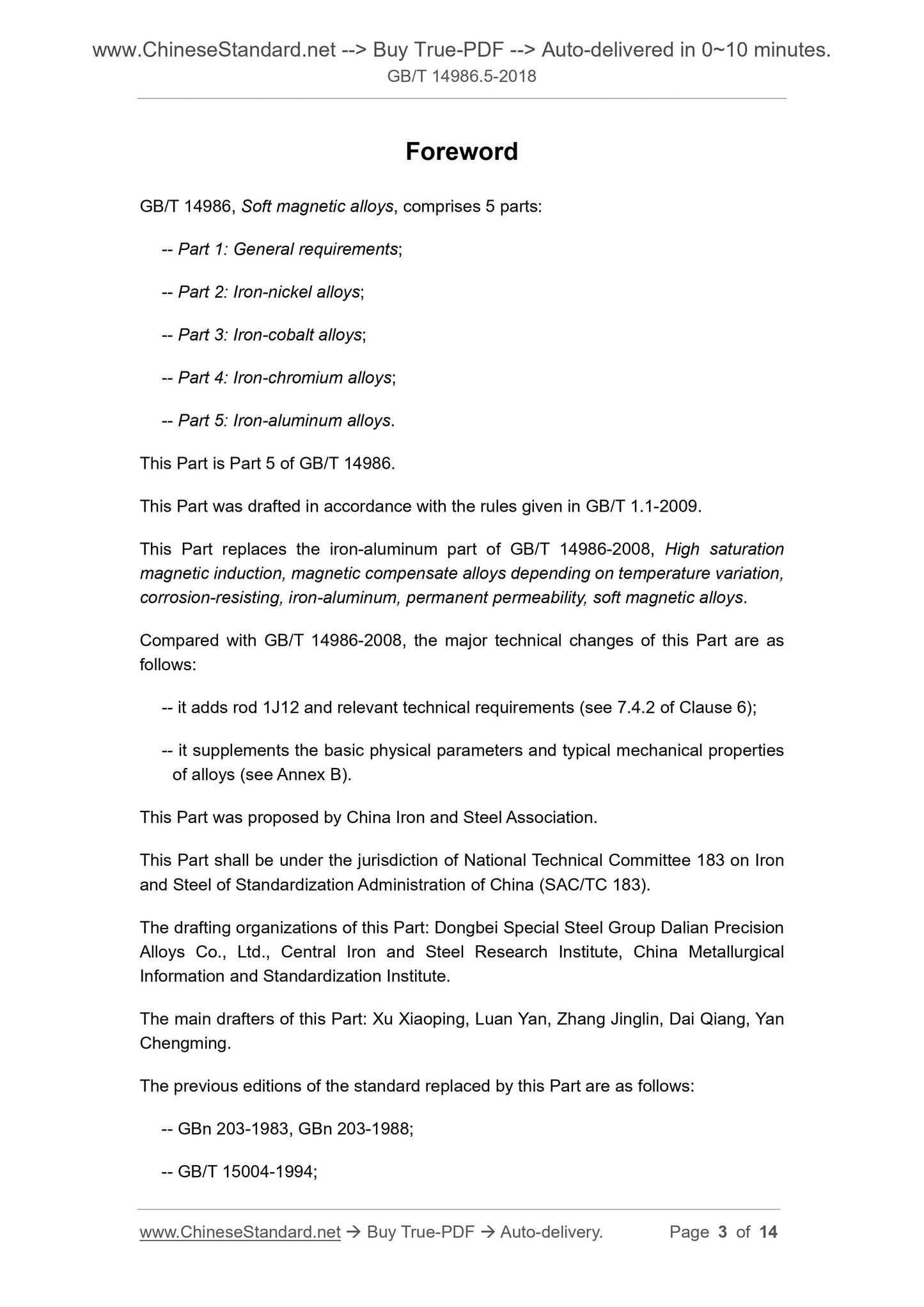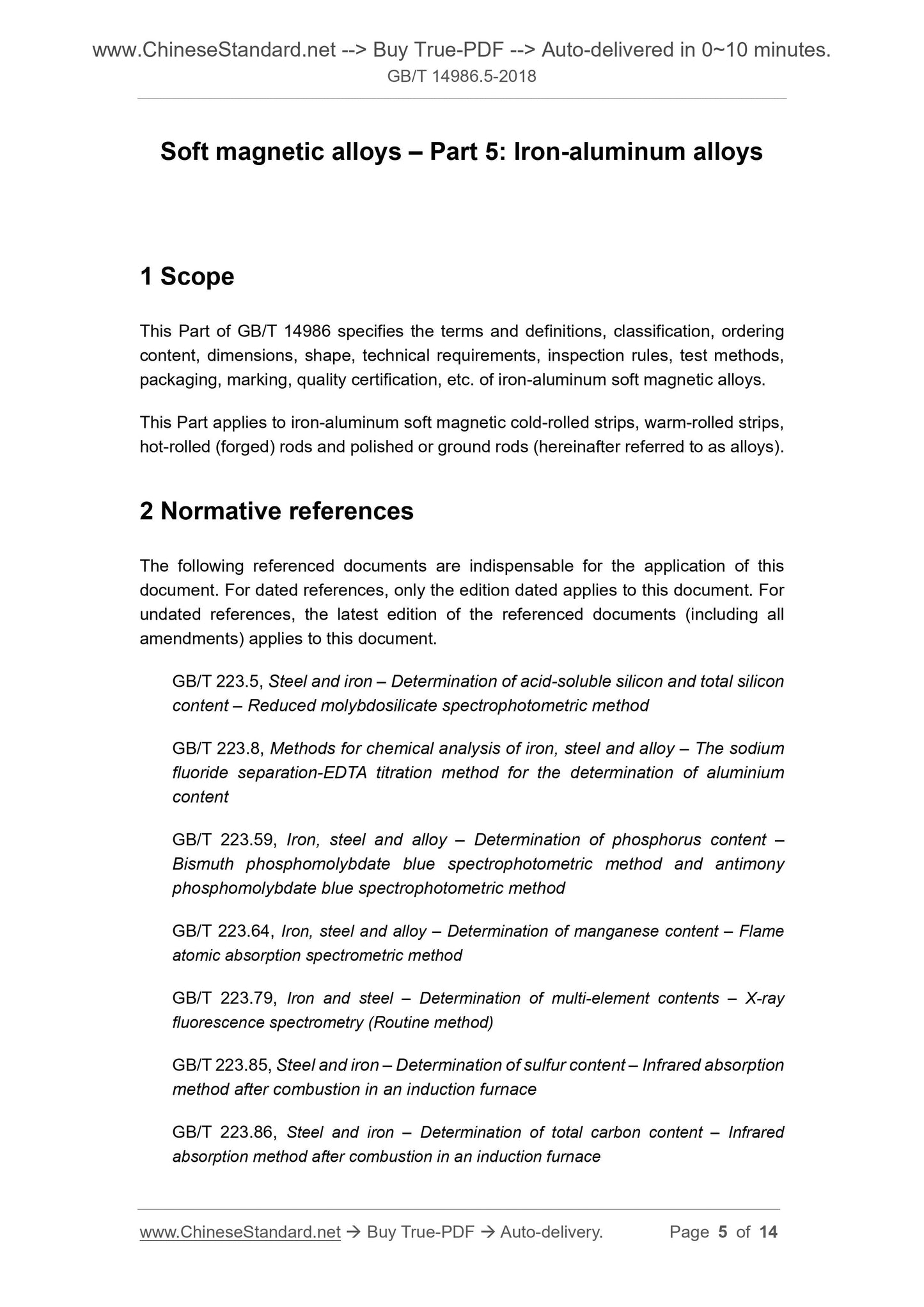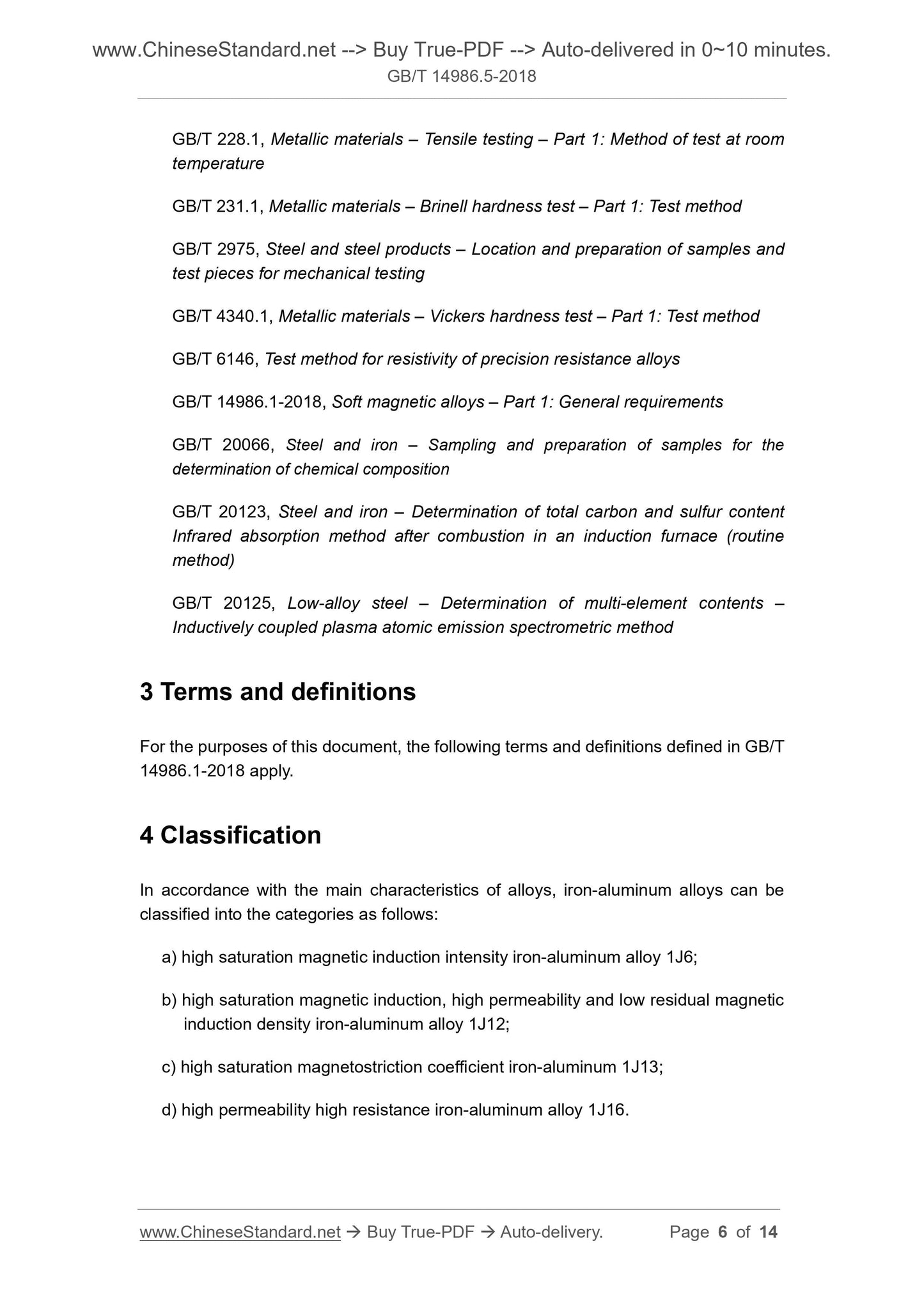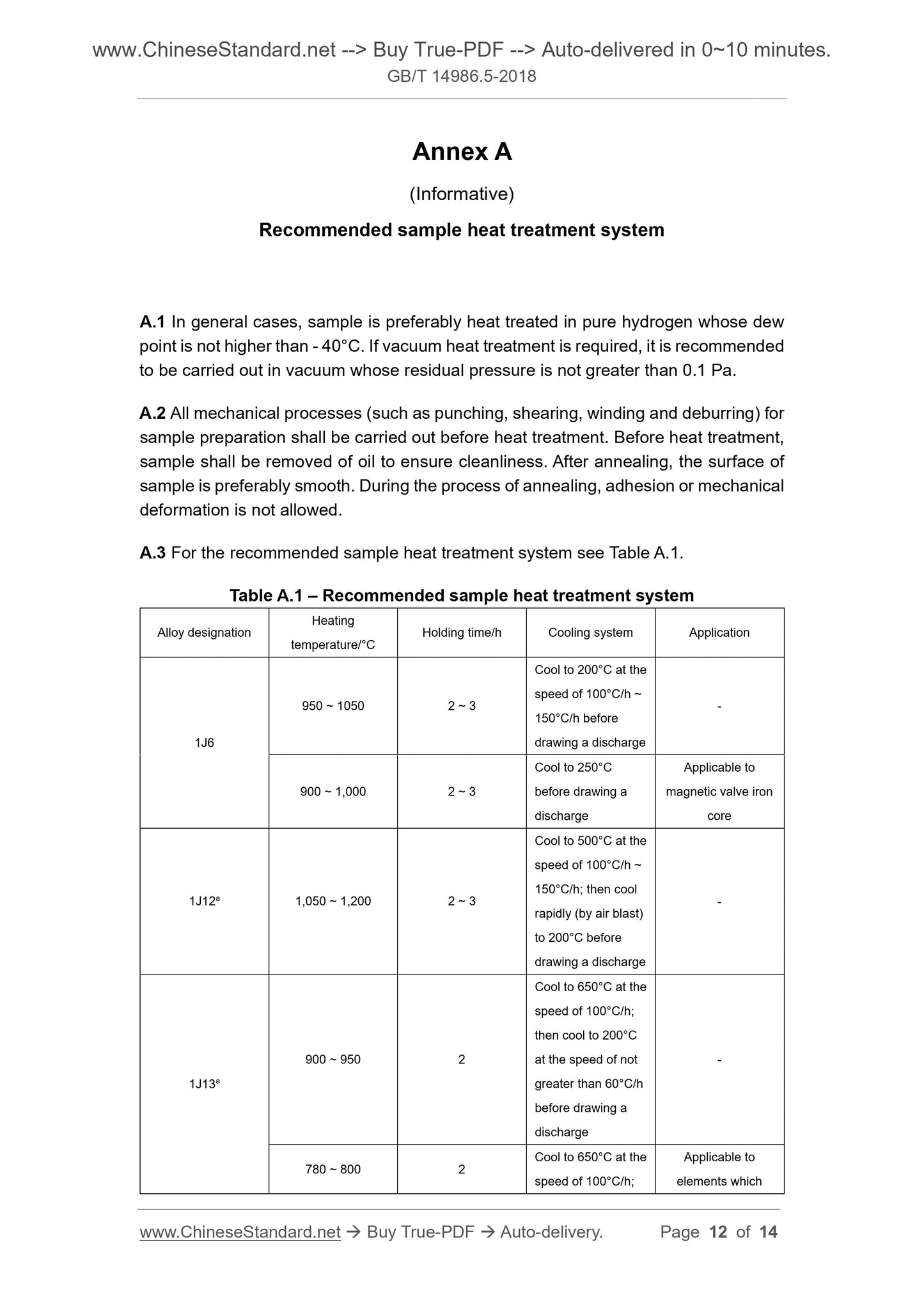1
/
of
6
www.ChineseStandard.us -- Field Test Asia Pte. Ltd.
GB/T 14986.5-2018 English PDF (GB/T14986.5-2018)
GB/T 14986.5-2018 English PDF (GB/T14986.5-2018)
Regular price
$145.00
Regular price
Sale price
$145.00
Unit price
/
per
Shipping calculated at checkout.
Couldn't load pickup availability
GB/T 14986.5-2018: Soft magnetic alloys - Part 5: Iron-aluminum alloys
Delivery: 9 seconds. Download (and Email) true-PDF + Invoice.Get Quotation: Click GB/T 14986.5-2018 (Self-service in 1-minute)
Newer / historical versions: GB/T 14986.5-2018
Preview True-PDF
Scope
This Part of GB/T 14986 specifies the terms and definitions, classification, orderingcontent, dimensions, shape, technical requirements, inspection rules, test methods,
packaging, marking, quality certification, etc. of iron-aluminum soft magnetic alloys.
This Part applies to iron-aluminum soft magnetic cold-rolled strips, warm-rolled strips,
hot-rolled (forged) rods and polished or ground rods (hereinafter referred to as alloys).
Basic Data
| Standard ID | GB/T 14986.5-2018 (GB/T14986.5-2018) |
| Description (Translated English) | Soft magnetic alloys - Part 5: Iron-aluminum alloys |
| Sector / Industry | National Standard (Recommended) |
| Classification of Chinese Standard | H58 |
| Classification of International Standard | 77.140.40 |
| Word Count Estimation | 9,954 |
| Date of Issue | 2018-05-14 |
| Date of Implementation | 2019-02-01 |
| Older Standard (superseded by this standard) | GB/T 14986-2008���� |
| Regulation (derived from) | National Standards Announcement No. 6 of 2018 |
| Issuing agency(ies) | State Administration for Market Regulation, China National Standardization Administration |
Share
